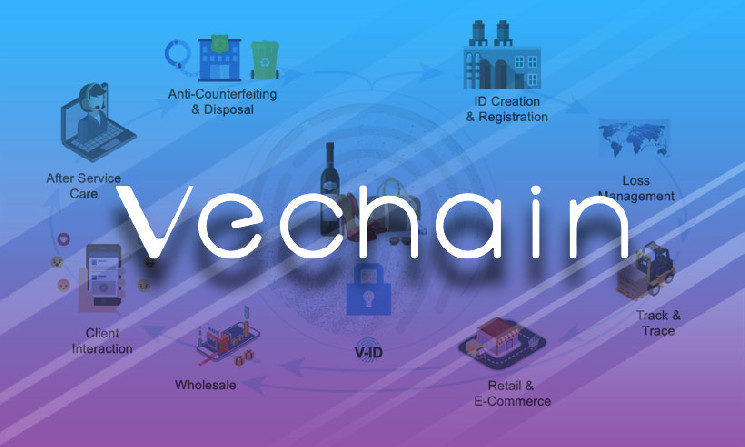How Vechain and its Traceability Solution Can Prevent Counterfeiting

One of the most significant issues the supply and manufacturing industry faces is counterfeiting. It is estimated that the value of illicit goods is around half a trillion dollars annually, a huge problem affecting companies producing original products. Years ago, this was a relatively small-time business, but it has since grown to become a significant issue for many companies. The counterfeiting industry is a complex business with devastating effects on the individuals and companies it affects. According to the World Health Organization, around 30% of the drugs in circulation are fake, and 1 in 10 medical products in developing countries is counterfeit, responsible for about a million deaths annually. Despite the fight against counterfeiters, it’s still not always possible to tell if a product is real or fake. Retailers must have the necessary tools and resources to combat this issue. Unfortunately, the various technologies used to combat counterfeits have failed. It is why blockchain technology could be a viable solution to help prevent fraud. This article discusses the various advantages of blockchain-based technology VeChain and its traceability solution that can help businesses prevent counterfeiting.
What is VeChain (VET)?
As one of the first blockchains built specifically for enterprise-level clients, VeChain aims to improve the efficiency of the supply chain. The project’s developers are focused on using distributed ledger technology to improve the efficiency of the business process. Its robust features allow users to enhance their supply chain management and business processes. Due to the complexity of the logistics industry’s data collection systems, the lack of transparency and transmission of this information is a significant issue that has been affecting the operations of the sector. This issue is caused by the lack of unity between the various data sources within the supply chain. Through VeChain, businesses can track various data sources such as temperature, transportation status, and quality. It is crucial as it allows them to improve efficiency and reduce overhead. Through a distributed business ecosystem, VeChain eliminates the need for third parties and helps them improve their accountability.
VeChain Traceability
The Vechain network is a multi-faceted system that allows users to collect and analyze data. It includes various tools that are connected to the blockchain.
Toolchain
The toolchain is a fundamental component of the Vechain blockchain, allowing users to improve efficiency. However, it can also be very challenging to connect all the various components of the blockchain. This toolchain is a part of Vechain’s platform that aims to connect the Internet of Things (IoT) and the blockchain. It facilitates the transfer of data between the various devices and the blockchain. It is also a framework that integrates various components of the IoT and blockchain ecosystem. It is a vital part of the solution for monitoring and tracking the activities of multiple devices.
IoT Device
The Internet of Things (IoT) is a central component of the Vechain blockchain and its traceability solution. It allows users to collect and manage data related to various factors such as temperature, location, and precipitation. The Internet of Things (IoT) devices are placed on the products under transfer or in packaging. These are then used to monitor the condition of the products. Each product has one of these devices, and the vehicle transporting them has one. The Internet of Things (IoT) devices attached to a vehicle or product have the necessary conditions to ensure that the goods or services are delivered to their intended destination. They can also collect data about the conditions of the road and the time spent at a particular stop. After gathering all the necessary details, the device can then be able to provide the user with a better understanding of the surrounding area.
The Blockchain Core
The blockchain core is the central hub of the VeChain network. It acts as the intermediary between the various activities within the network. Once the data collected by the IoT devices is sent to the blockchain, it can be easily accessed by buyers and sellers. The information collected by the IoT devices during the transit process can be used by the parties involved to compensate for the damages caused by the conditions. It eliminates the need for manual handling and helps protect the quality of the goods.
VeChain Traceability: A Viable Solution to Counterfeiting
Businesses can use a blockchain-based distributed ledger to fight counterfeiting through the Internet of Things and VeChain. This platform can help companies and consumers track the origin, ownership, and location of their products and raw materials. It can also give them the necessary transparency to improve their supply chains because both the blockchain and the IoT provide a secure and unalterable way to store and manage information. This technology can significantly improve the fight against counterfeiting by allowing authorities to track and monitor the movement of products in the supply chain. It can also prevent fraudulent activities by sharing real-time information with the government and other stakeholders.
How Does VeChain Detect and Prevent Counterfeiting?
Through VeChain, suppliers and manufacturers can easily track and confirm the provenance of their products. Businesses can use these smart tags in various forms, such as security labels and digital tags. Each of these can be equipped with a unique digital or QR code. Besides security labels, companies can also use smart tags on various types of surfaces, such as ceramic or metallic. The related marks or smart tags are automatically recognized when a batch of products is entered into the blockchain network. Before businesses can add a product or service to the blockchain, it should be thoroughly checked to ensure that it is genuine and verified. With the unique mark or barcode already on the platform, manufacturers and suppliers can easily track the entire process of their products, from their manufacturing to their sales. A product’s entire journey can be captured with smart tags, making it incredibly hard to try and replicate. Also, since the data collected by these tags are not visible on the blockchain, it can be easily separated from counterfeit goods. Businesses can also use it to confirm the authenticity of a product by looking up its origin. When a product is recalled or is brought back for repairs due to warranty terms, or when the manufacturer discovers that the parts or the entire product are not original, companies can use the smart tag to confirm the authenticity of the goods.
Conclusion
Vechain is one of the most popular blockchain networks and has many use cases. However, despite the popularity of VeChain, the lack of traceability in the supply chain led to many counterfeiting incidents. However, the creation of a new supply chain management system can now help prevent counterfeiting in the process. This new technology is used in various industries, such as food, transportation, and the environment. Vechain is working to ensure that it provides the necessary tools and resources to improve the efficiency of these industries.






 Bitcoin
Bitcoin  Ethereum
Ethereum  Tether
Tether  USDC
USDC  TRON
TRON  Dogecoin
Dogecoin  Cardano
Cardano  Bitcoin Cash
Bitcoin Cash  Chainlink
Chainlink  LEO Token
LEO Token  Stellar
Stellar  Monero
Monero  Zcash
Zcash  Litecoin
Litecoin  Hedera
Hedera  Dai
Dai  Cronos
Cronos  OKB
OKB  Tether Gold
Tether Gold  Ethereum Classic
Ethereum Classic  KuCoin
KuCoin  Gate
Gate  Algorand
Algorand  Cosmos Hub
Cosmos Hub  VeChain
VeChain  Dash
Dash  Tezos
Tezos  Stacks
Stacks  TrueUSD
TrueUSD  IOTA
IOTA  Basic Attention
Basic Attention  Decred
Decred  Theta Network
Theta Network  NEO
NEO  Synthetix
Synthetix  Qtum
Qtum  Ravencoin
Ravencoin  0x Protocol
0x Protocol  DigiByte
DigiByte  Zilliqa
Zilliqa  Nano
Nano  Siacoin
Siacoin  Numeraire
Numeraire  Waves
Waves  Ontology
Ontology  Enjin Coin
Enjin Coin  Status
Status  BUSD
BUSD  Hive
Hive  Pax Dollar
Pax Dollar  Lisk
Lisk  Steem
Steem  Huobi
Huobi  OMG Network
OMG Network  NEM
NEM  Augur
Augur  Bitcoin Gold
Bitcoin Gold  Bitcoin Diamond
Bitcoin Diamond  Ren
Ren